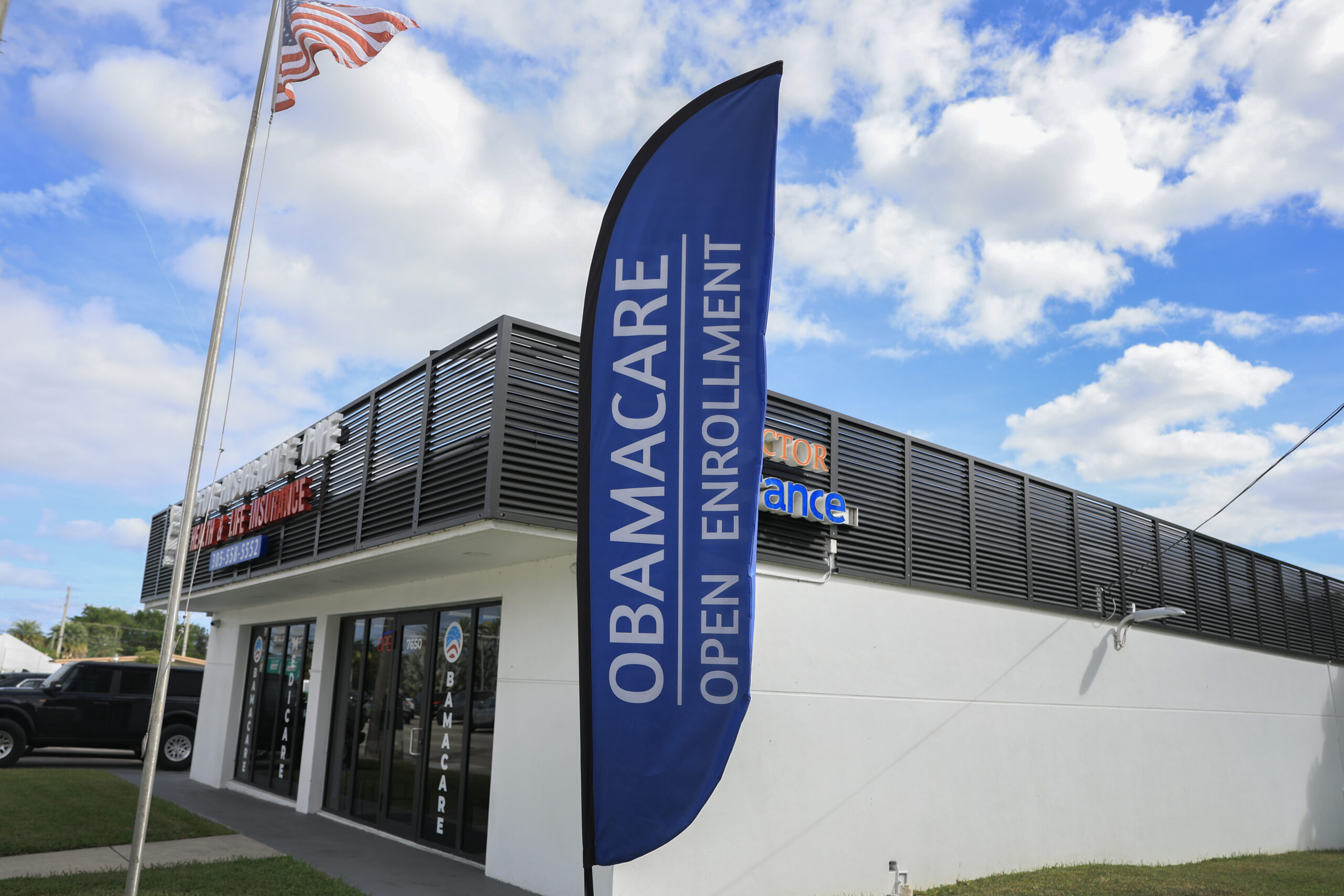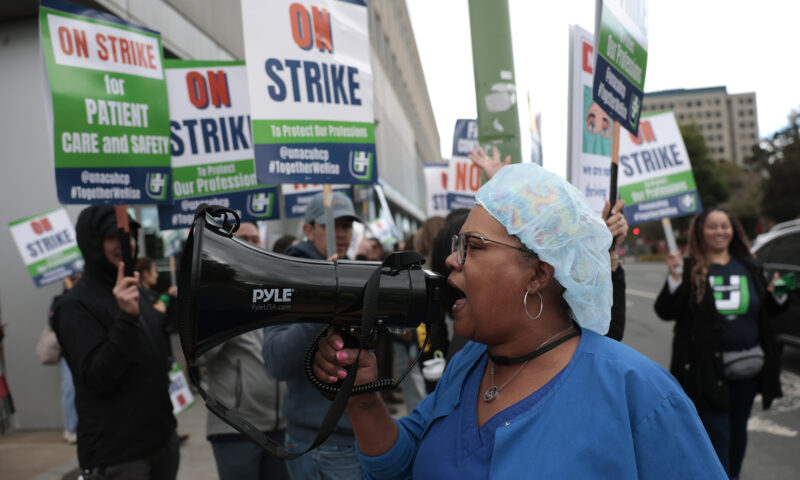With critical federal subsidies set to expire at the end of the year, the cost of health insurance that is purchased through the Affordable Care Act marketplace is about to explode — in many cases, doubling or tripling what people have been paying.
But the folks who’ll get hit with those mammoth increases aren’t living in poverty — at least, not as the federal government defines it. Instead, they are among the millions and millions of Americans who earn “too much” to qualify for Medicaid, yet nowhere near enough to cover the sky-high cost of health care on their own.
They are, in many cases, the struggling working class, and some of them reside firmly in what is usually defined as the middle class. That makes them precisely the group that Obamacare, as many people refer to the ACA enacted in 2010, was designed to reach in the first place.
More than 24 million Americans, including nearly 2 million in California, have health coverage this year through the ACA marketplace. Almost all of them receive enhanced subsidies — the big discounts on health insurance premiums that Democrats voted into place during the pandemic. Without the subsidies, millions of workers likely will no longer be able to afford their policies, experts say.
It’s one reason why so many congressional Democrats fought Republicans to a budget-shutdown stalemate for weeks, trying to forge a deal under which the discounts would be extended. This week, a handful of Democrats finally broke ranks, putting the GOP in charge of what happens next. The government will reopen, and the budget process almost certainly will go forward without the enhanced subsidies that have allowed so many U.S. citizens to retain their health care coverage.
After becoming one of eight Senate Democratic Caucus members to vote with the Republicans to open the debate on a House-passed funding bill, Sen. Tim Kaine of Virginia said, “I have long said that to earn my vote [to reopen the government], we need to be on a path toward fixing Republicans’ health care mess and to protect the federal workforce.”
In the end, though, Republicans got Kaine and the others without giving up anything on the Obamacare premiums — nothing but a vague promise to schedule a future vote on them in the House and the Senate, both of which are controlled by the GOP.
The fallout could be vicious. Marketplace shoppers are, for the most part, working people and families who don’t have health care coverage through their employer. That vast list includes small business owners and their employees, independent contractors, farmers, gig economy workers — many of the groups long courted by politicians who see them as innovators and important drivers of the U.S. economy.
* * *
Obamacare was highly ambitious but pretty straightforward. It expanded Medicaid to cover more low-income Americans and created the ACA marketplace for moderate-income workers — often, people who earn $50,000 to $60,000 annually — to be able to buy affordable health insurance.
In many cases, it did so by offering discounts on insurance premiums that are calibrated to how much those workers earn.
The pandemic turbocharged the discounting process. In 2021, as millions of people lost their jobs and the health plans that went with them, the Democrat-controlled Congress dramatically enhanced the ACA premium subsidies to make plans more affordable. The number of marketplace enrollees more than doubled, from 11 million to 24 million, as individuals and families turned to the ACA as a way to help them buy insurance on their own.
People at lower ends of the income spectrum — those above Medicaid poverty levels, but still working poor — could choose a plan and often pay zero in monthly premiums, and even people whose prepandemic income was several times the federal poverty level could still receive enough of a discount to afford a plan.
That’s the part of Obamacare that is about to go away. In fact, it’s part of a triple whammy. Not only does the Trump administration want to kill the enhanced tax credits that function as critical marketplace subsidies, but it also plans to jack up the required contribution from people at most income levels. And all of this is taking place amid huge spikes in the price of premiums from health insurers in the marketplace — more than 25%, on average.
The impact could be crushing for many Americans. According to research by the Kaiser Family Foundation, without the enhanced subsidies, a single person earning $23,000 a year would see their health premiums jump from $0 to $920 annually, or about a quarter of their typical food budget for the entire year.
And a couple with a combined income of $85,000 and a mid-tier health plan would see premium payments soar from $7,225 per year to a mind-numbing $21,339. Adding in the expected rate hike from the insurance companies, KFF reported, the annual total of premium payments could come to $28,561 — nearly $2,400 a month for those two people. That’s about a third of their combined income for the year.
This is why Democrats were willing to fight, even at the risk of being blamed for the government shutdown. This is why they held out for six weeks. And this is what is now on the verge of being lost.
* * *
It’s always possible that the Republican-controlled Congress will relent to some extent on marketplace subsidies. As KFF reporter Drew Altman points out, the end of enhanced credits on the health care exchange could deeply affect some Republican states and traditional voter blocs, including farmers and small business owners.
Beyond that, neither the first nor second Trump administrations ever advanced a plan to replace Obamacare, despite the president’s deep antipathy toward the program and repeated promises to come up with something better.
Even now, in the wake of the Democratic rollover on the budget process, the specter of runaway health care costs dogs the Republican Party in advance of the 2026 midterms, and the Affordable Care Act overall remains very popular among U.S. adults.
“We want a health care system where we pay the money to the people instead of the insurance companies,” Trump told reporters this week. “We’re going to be working on that very hard over the next short period of time.”
Working people have heard many versions of that sentiment from Trump through the years. They also know what they see: With Congress poised to gut Medicaid and, now, the middle-income marketplace subsidies that brought affordable health care premiums to millions, it’s a more elusive goal than ever — and they’ll be the ones suffering for it.
Copyright 2025 Capital & Main


 Column - California UncoveredOctober 14, 2025
Column - California UncoveredOctober 14, 2025
 Pain & ProfitNovember 3, 2025
Pain & ProfitNovember 3, 2025
 Striking BackOctober 15, 2025
Striking BackOctober 15, 2025
 Column - State of InequalityOctober 16, 2025
Column - State of InequalityOctober 16, 2025
 The SlickOctober 17, 2025
The SlickOctober 17, 2025
 Latest NewsOctober 29, 2025
Latest NewsOctober 29, 2025
 Latest NewsOctober 20, 2025
Latest NewsOctober 20, 2025
 Column - State of InequalityNovember 6, 2025
Column - State of InequalityNovember 6, 2025

